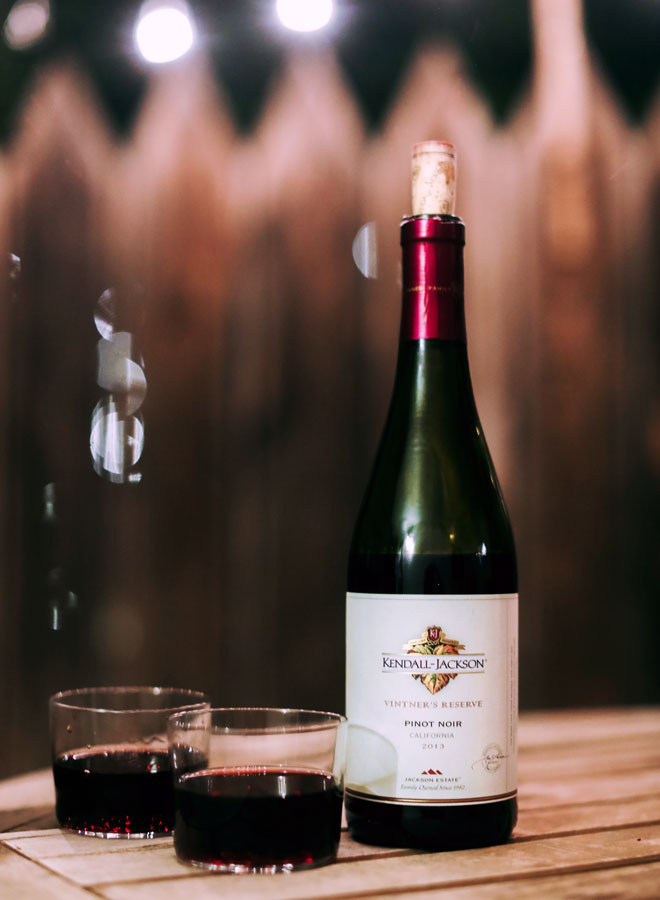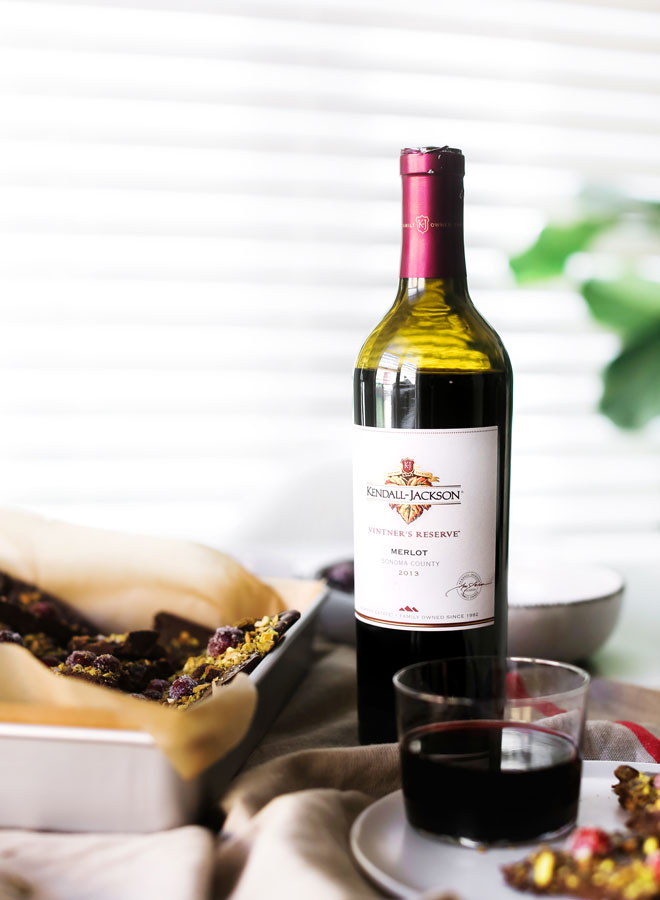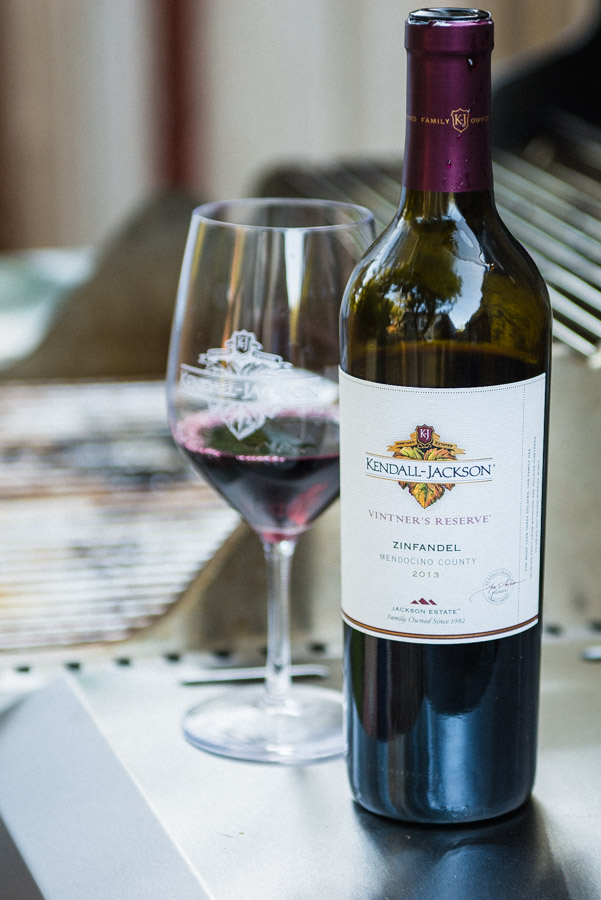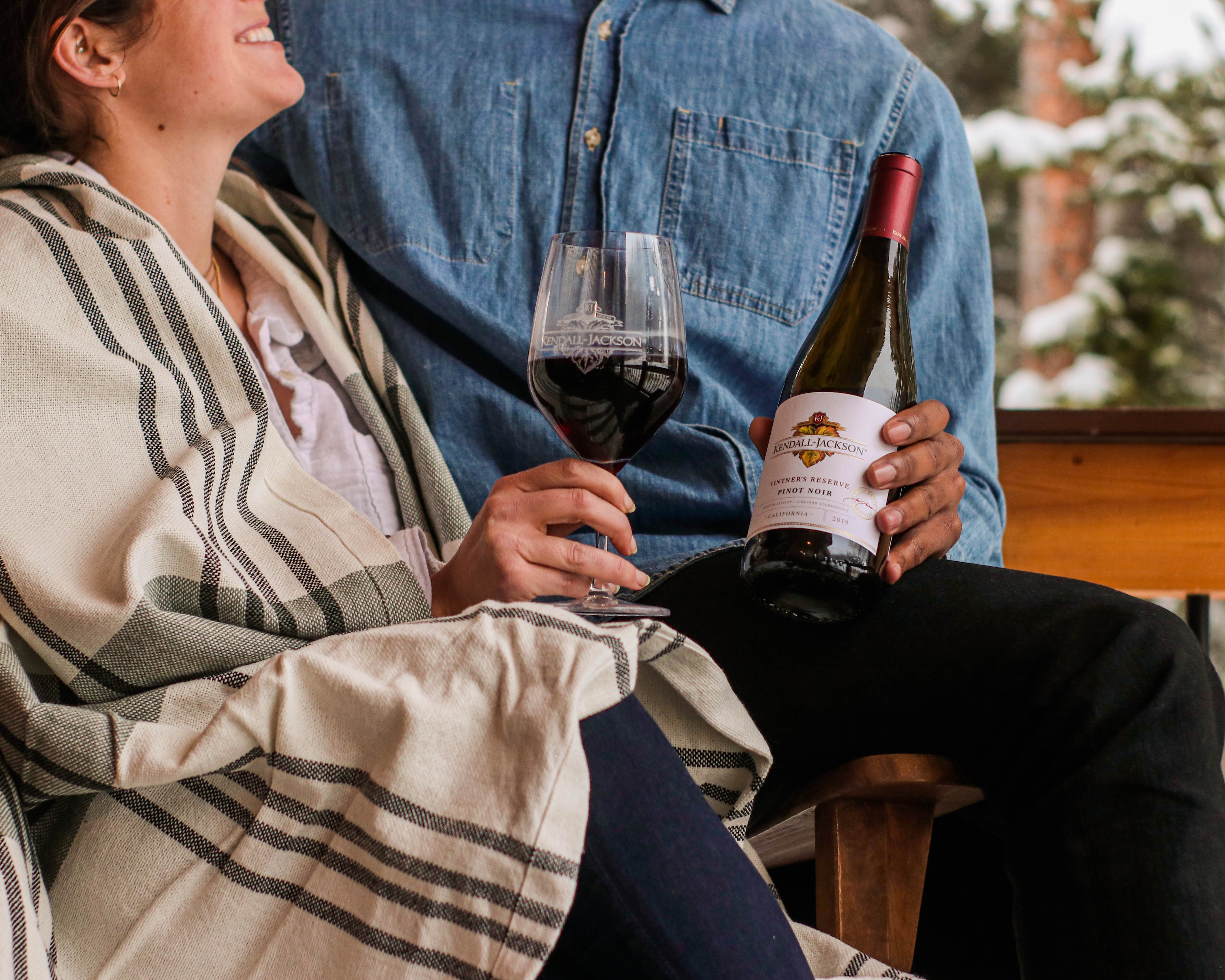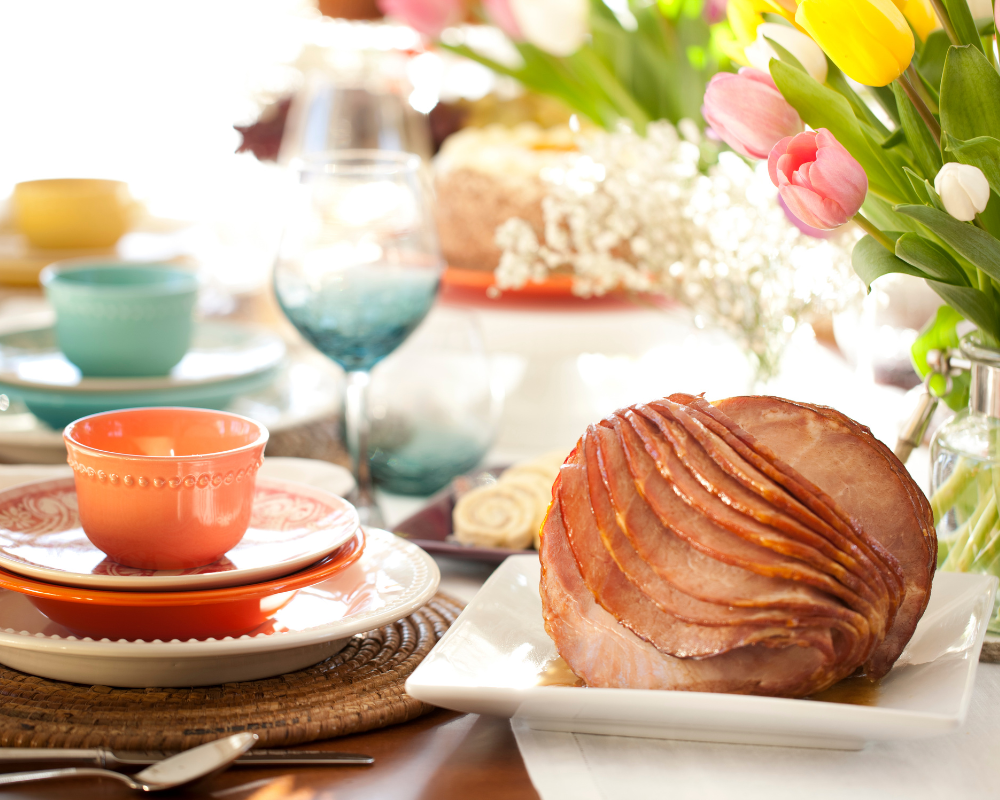Red Wine Types and More: The Basics of Red Wines
From the eclectic green pastures of France to the golden hills of Northern California, a diverse range of red wine types – from light to bold – make their way to tables across the world from a wide mix of growing regions. Red wines can vary widely in taste, body, color, scent, and the overall experience they provide. Finding the right wine for the right occasion requires some skill. It's easy to assume that you can pair a Merlot, Zinfandel or a Pinot Noir with anything. However, differences in region, climate and vintage yield nuances in the wines, which create an added layer to finding the perfect wine for any occasion.
Taking care to note the essentials – grape variety, growing season, body, origin and more – our breakdown of red wines will help fill the void for anyone looking to fine-tune their wine collections or find the perfect red wine for any meal.
The Difference in Grape Varieties
Don’t let the name “variety” scare you too much. A wine variety is the wine grape used to produce a particular wine. Many wines may only have one variety listed on the label. In the United States, the Federal government requires 75 percent of a specific grape be present in the wine, if it is to be designated a specific wine type. The dominant grape is then listed on the label.
A Vast Number of Varieties
Wine grapes, as with many other cultivated plants, have a large number of varieties that deeply impact the taste and texture of the fruit. Apples, for example, have more than 7,000 varieties grown throughout the world, with more than 2,500 in the U.S. alone. It should come as no surprise, that there are at least 10,000 wine grape varieties in the world. Not all are reds, of course, and many are not common or simply not ideal for noble wine consumption. However, the difference in varieties can range from a subtle change in texture to an immense difference in a wine’s entire expression.
Most wine drinkers are familiar with the noble red grapes/varieties: Syrah, Cabernet Sauvignon, Zinfandel, Merlot, and Pinot Noir. Although these five are the most popular and the most well-known, they are far from being the only red wine types available.
Mono Varieties v. Blended Wines
Red wine varieties vary in a myriad of different ways. Each variety (e.g., a pure grape wine using a single wine grape type) will have a different flavor profile, arising from a large number of factors influencing the eventual expression. Some red wines are actually mixtures of different varieties. These are known as blended wines. For example, a wine producer may decide to mix Sangiovese and Cabernet Sauvignon in order to produce a red that combines the noble red fruit characteristics of Sangiovese with the boldness and structure of a Cabernet Sauvignon.
A fair number of "New World," or non-European, wines are blended. Still, varietal red wine types are extremely common and often favored among New World wineries.
Many New World wines are named after the variety (e.g., Pinot Noir), while many Old World wines are named solely after their region. For example, the generic name “Burgundy” could be any wine produced in the Burgundy region of France.
Impact of Terroir
Varietal differences are also influenced by terroir, which includes growing season, temperature, rain, altitude, and even the very soil the vines are rooted in. Which is to say climate and regionality matter almost as much as the genetic differences in the red wine grapes themselves.
For example, warmer temperatures will produce a higher alcohol content in the grapes. The terroir has a deep impact on the thickness of the skin and the overall sugar content. Keep in mind that a wine's flavor is impacted by the skin and the sugar content. Thinner skin results in fewer tannins, while lower sugar content means lower alcohol content and vice versa. You can split most wines into two main categories: cool climate varieties and warm climate varieties.
Cool Climate Varieties
A cool climate usually means that the area is influenced by such factors as proximity to bodies of water or higher elevations. Far from the equator, these climates provide less direct sunlight, more cloud or fog cover, and cooler temperatures. These wines tends to have lower tannins, less ripeness and less alcohol. Cool climate reds include Gamay and Pinot Noir.
Warm Climate Varieties
Warm climates are typically closer to the equator or inland from the coast and provide more sunshine, often more rain, different soil types, and warmer temperatures throughout the growing season. The result is increased ripeness with fuller-body and higher alcohol contents. These wines tend to have a deeper red color and are more tannic. Warm climate varieties include Cabernet Sauvignon, Grenache, and Mourvedre.
Importance of Varietal Variance
Climate and genetic differences can impact the body, or the mouthfeel, of red wines. The body is affected by several factors, most prominently the alcohol content and the tannins. The alcohol content affects the viscosity of the wine, with lighter-bodied wines showing a lower alcohol content (typically under 12.5 percent), while full-bodied wines tend to have a thicker, bolder mouthfeel and have alcohol contents above 13.5 percent.
Meanwhile, the tannins, which are found in the skin, seeds and stem of the plant, impart color and bitterness in the wine. Tannins also cause a drying effect on the tip of the tongue (not to be confused by the level of dryness, which is a measure of the sweetness of your wine) — a sort of grippy quality.
Different varieties can produce a range of weights in wine, from light to medium to full, with some falling in-between. Red wine varietal differences will significantly affect what meal they pair with best, so it's always preferable to research these factors before making a final pairing decision.

Red Wine Varietals and Flavor Profiles
Ready to dive right into the world of varietals? Here’s a helpful list of red wine varieties, complete with common expressions and fun facts to keep on hand to impress your friends.
Light Bodied
Gamay
Origin and Climate: Cool climate wine hailing from the Burgundy region of France, also grown in Switzerland, Canada and Turkey.
Color: Mild red, hedging on bright purple.
Flavor Profile: Light and fruity, with hints of black currant and raspberry. Little grip with a light body makes for a great mouthfeel.
Food Pairings: High acidity and low tannin level make this wine pair well with an extremely diverse variety of foods. Roast chicken and less-marbled meats are a perfect complement, as are creamy cheeses.
History and Fun Facts: Pinot Noir’s lesser-known (and lesser-appreciated) cousin, Gamay originates in the Burgundy region, right alongside its more popular family member. Mostly grown in Beaujolais, its full name, “Gamay Noir à Jus Blanc” translates to “Gamay Black Juice White,” a playful hint at this wine’s light body and floral, fruity tones that make it as white wine-like as any red might get. Gamay first hit the scene in the late 1300s, but in America, it continues to live in the shadow of Pinot Noir, making it a good choice for the budget-conscious. A great bottle can cost as little as $15.
Light-to-Medium Bodied:
Pinot Noir
Origin and Climate: Pinot Noir excels in cool to medium climates. Mostly grown in France and the U.S., with notable entries from California, Oregon, Germany, New Zealand, Italy, and Australia.
Color: A lustrous and vibrant red, among the lightest red wine varieties.
Flavor Profile: A complex mixture of red berries with clove and licorice undertones and distinct rose pedal or anise notes. One of the few wines considered to have an umami taste.
Food Pairings: Goat cheese, hazelnuts, lamb, roasted chicken, mushroom preparations, and creamy cheeses.
History and Fun Facts: This wine is often referred to as the “heartbreak” grape as, with its thin skin, it is a notoriously sensitive and difficult variety to grow. History lovers should note that Pinot Noir dates back to the Roman era. Interestingly, genetic tests conducted on three different Pinot varieties (Noir, Gris, and Blanc) showed no difference between the three in a genetic sense! The only difference is the skin color, meaning you'll only notice differences as a result of regional climate differences. Pinot Noir is favored around the world for the very reason why it frustrates many sommeliers: its complexity. The grapes are capable of producing a wide range of possible flavor expressions, making Pinot Noir's popularity wholly understandable.
Medium Bodied
Cabernet Franc
Origin and Climate: A cool-climate varietal harking from the Loire Valley in France. It is also widely grown internationally, found in Italy, Hungary, Spain, the United States, Canada and many other cool climate regions.
Color: A deep, solid, red that varies immensely from region to region in terms of darkness.
Flavor Profile: Red and black fruits, highlighted by green herb and pepper notes.
Food Pairings: Higher acidity and lower bitterness make this wine pair well with grilled meats, roasted tomato dishes, earthy vegetables, and Italian cheeses.
History and Fun Facts: Although it can be and is used as its own varietal wine, Cabernet Franc is very often used as a blending grape for the ever-popular Bordeaux blends. This grape finds its origin sometime in the 17th century of France, connected to the well-known Cardinal Richelieu. Research in the late 1990s revealed that Cabernet Franc was at one point crossed with Sauvignon Blanc, producing the now-popular Cabernet Sauvignon.
Carignan
Origin and Climate: Warm climate wine grown primarily in the southern Languedoc region of France, but also popularly grown in Tunisia, Algeria, and Spain, as well as many other warm-weather locations internationally.
Color: Dark red.
Flavor Profile: Notable primarily red fruit, earthiness and a hint of spice. With a medium weight and firm acidity and tannins, Carignan, when made well from a suitable region can be complex and substantial.
Food Pairings: High acidity and alcohol content limit food pairings. Stick primarily with roasted poultry, cured meats, and mild vegetables, as this wine will confer its own spicy tones onto the food. Carignan goes well with Mediterranean flavors and meats, such as grilled lamb, herbed risotto or grilled vegetables.
History and Fun Facts: Emerging from years of poor quality production, Carignan is now an extremely popular wine. This wine originates in Cariñena, Aragon, Spain, although some writers speculate that it may date all the way back to the Phoenicians in the 9th century BC. In his Pocket Wine Book, Oz Clarke describes Carignan as, “responsible for much boring, cheap, harsh wine.” While not the most glowing report, Carignan is known for filling a necessary niche.
Nebbiolo
Origin and Climate: This cool-to-warm weather grape is from the fog-laden Piedmont region of Italy. There are small amounts of Nebbiolo under vine in Mexico, Australia and the United States.
Color: A mild, middle-of-the-road red.
Flavor Profile: Rose and tar are Nebbiolo’s calling cards, with leather black notes. High tannin and acid give it a grippy mouthfeel.
Food Pairings: Given its popularity in its native Italy, this wine pairs well with Italian food and vegetables that are common in Italian food such as mushrooms, garlic and truffles.
History and Fun Facts: Overwhelmingly popular in Italy, Nebbiolo’s name is potentially a derivative of the Italian word for fog -- nebbia. This is fitting, considering the foggy conditions common to the Nebbiolo varietal growing region in Piedmont, Italy. Nebbiolo is believed to be native to the region, giving credence to the fact that the wine was mentioned as far back as the late 13th century AD.
Medium-to-Full Bodied:
Merlot
Origin and Climate: Grown in both warm and cool climates, producing a range of flavors. Most common in Bordeaux, France, Toscana, Italy, and California.
Color: The silkier, rounder cousin of Cabernet Sauvignon.
Flavor Profile: Merlot is one of a few wine grapes that is grown in both cool and warm climates. This fruit-forward variety produces a range of flavor profiles, ranging from a licorice and roasted flavor, typical for cool climate Merlots, to an intensely fruity, soft mocha flavor indicative of warm climate Merlots.
Food Pairings: As a middle-of-the-road wine with medium acidity and medium tannins, this red wine pairs well with lightly-seasoned red meats, grilled vegetables, and hard aged cheeses.
History and Fun Facts: French for “blackbird,” research shows that Merlot is a child of Cabernet Franc. The word “Merlot” in relation to wine first appeared in 1784, as a positive taste description. The grape was often eaten ripe by itself due to its delicious flavor. It should come as no surprise that Merlot is one of the most popular wines in the world, growing on more than 2,300 square miles worldwide.
Mourvedre (a.k.a. Monastrell, Mataro)
Origin and Climate: A warm climate varietal most common in the Alicante, Jumilla, and Almansa regions of Spain. Also common in Bandol and the Rhône, both regions in France.
Color: A deep, almost black cherry red.
Flavor Profile: Dark fruit flavors such as plum and black cherry, highlighted by smoky, black spice and earth tones.
Food Pairings: High tannin and medium acidity levels, mixed with a smoky, gravel taste alongside the fruit, make this a perfect pairing for red meats, especially those thrown on the grill.
History and Fun Facts: The thick-skinned Mourvedre is a favorite among Mediterranean growers. This hardy grape has its origins in the Catalonia region of Spain, with a likely introduction by the Phoenicians around 500 BC. The Spanish name for this deep red wine, Mataro, comes from the city Mataro, a large, industrialized city in the Spanish Barcelona province. Mourvedre is a common ingredient in Spanish Rosé Cava, the Spanish equivalent of Champagne.
Sangiovese
Origin and Climate: Sangiovese thrives in hot, dry climates. Originally grown in Tuscany, the grapes can now be found in California.
Color: A notable, almost blood red.
Flavor Profile: Red fruit flavors of cherry, fig and plum mixed with floral elements and strong, savory overtones of Italian herbs like oregano and thyme.
Food Pairings: Although it has a medium body, Sangiovese is surprisingly high on tannin and acidity. Pair this wine with Italian dishes, especially those favoring the acidic pull of tomato and Italian herbs.
History and Fun Facts: One of Italy’s oldest varietals, Sangiovese dates back to the 1600s on the Italian peninsula. Some even believe the wine dates back to the Roman era, given that the name loosely translates to “the blood of Jove.” For those who haven’t studied up on Roman mythology recently, Jove was the god of the sky, similar to, but not the same as, thundery Zeus.
Zinfandel
Origin and Climate: A warm climate grape grown most prominently in California and Italy.
Color: A deep red, trending toward purple.
Flavor Profile: Jammy, bramble fruit flavors with spicy notes.
Food Pairings: Zin’s flavor profile makes it pair best with pizza and most barbecued meats, as well as nutty herbs and spices.
History and Fun Facts: Zinfandel is often the first wine many new and budding wine lovers try. Its fruity flavors and high alcohol content make it a good introductory wine. Considered the most well-known representative of ‘old vines,’ Zinfandel’s European origins date back to 6000 BC. It was one the first grapes introduced in California. It found its way to the rugged hills of California’s valleys as early as 1850. The grape now primarily exists here.
Full Bodied
Syrah (Shiraz)
Origin and Climate: A warm region wine with an honored history in the Rhône region of France. Also popularly grown in Australia, Spain, Argentina, South Africa, and the United States.
Color: Among the deepest, darkest red wines, approaching the blackest areas of the color spectrum.
Flavor Profile: A strong splash of dark tarty fruit tones, followed by a peppery, spicy finish.
Food Pairings: With a medium tannin and acidity level and a bold expression, Syrah pairs well with foods that are equally bold, but not spicy. Pair this wine with barbecued red meats and creamy cheeses.
History and Fun Facts: The building block of most Rhône blends, Syrah is indigenous to France. Half of the world’s Syrah comes from France, but it thrives in Australia as well. It first came to California in 1878. DNA testing in 1998 actually proved Syrah to be a genetic hybrid of two rare grapes: Mondeuse blanc and Dureza.
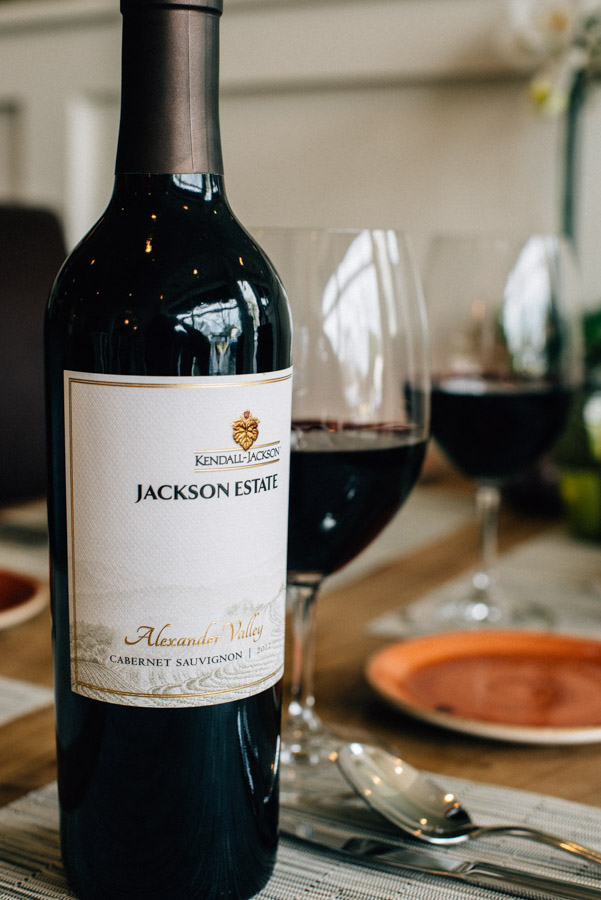
Cabernet Sauvignon
Origin and Climate: Warm climate grape commonly grown in France, California, Chile, South Africa, and Argentina.
Color: A darker-spectrum red with purple tones.
Flavor Profile: Black fruits, such as blackberry and black currants, with dried herbs and tobacco undertones.
Food Pairings: Roasted or grilled red meats, black beans and lentils, stews. Cabernet Sauvignon also pairs well with hard aged cheeses such as cheddar.
History and Fun Facts: Outside of its famed origins in Bordeaux, France, California’s wine region is uniquely suited to producing high-quality Cabernet Sauvignon. A hybrid between Cabernet Franc and Sauvignon Blanc, this grape dates back to the 18th century, when it enjoyed broad popularity. Cabernet Sauvignon is often blended in its native France, while Californian and Chilean Sauvignon are often bottled as mono-varietal wines.
Grenache/Garnacha
Origin and Climate: Notably warm climate grape, most common in southern France, Spain, Italy, the United States and Australia.
Color: Vivid red with a hint of pink.
Flavor Profile: Medium tannin and acidity produce an interestingly complex expression with overtones of strawberry and raspberry, including hints of citrus and spice in cooler locales.
Food Pairings: Bring on the spice! Originating in Spain, this wine pairs well with Spanish food filled with spices. The grape also pairs well with barbecued meats.
History and Fun Facts: Grenache has hard-to-pin origins, although it is widely accepted as having come from Spain's Aragon region, well before the 18th century. Grenache was among several varieties championed by the New World Rhône Rangers in the 1970s, increasing its popularity in California. Most Grenache varieties are well-received and highly-valued, with a few rare wines topping $100 a bottle.
Malbec
Origin and Climate: A warm weather variety well known for its Argentine provenance. Also found in France and Chile.
Color: An overwhelmingly dark purple-red.
Flavor Profile: A complex, fruit-driven character, with notes of blackberry and black cherry. Also includes a mixture of herbaceous and spicy aromas when grown in cooler climates. Malbec tends to have a rich, round texture.
Food Pairings: Given its popularity in Argentina, pair this wine with grilled red meats and hard aged cheeses
History and Fun Facts: Malbec finds its origins in France. However, a more interesting piece of its history rests in 1800s Argentina. The original cultivar had mostly disappeared in its native France after a disease outbreak. However, through nostalgia and governmental intervention, the plant found a new home in Argentina, where it not only survived, but thrived, achieving commercial success. Malbec is now commonly viewed as an Argentine wine with French origins.
Durif (Petite Sirah)
Origin and Climate: An uncommon warm climate grape grown primarily in California and Australia, with some small, specialized vineyards in Israel.
Color: A deep-set, pure purple.
Flavor Profile: Strong notes of dark sugar plums, blueberries, black pepper, dark chocolate, and black tea.
Food Pairings: Despite its opulent mouthfeel, its fruit flavors allow it to pair well with spicy, herbaceous and fatty foods. Avoid anything too sweet.
History and Fun Facts: Durif, or Petite Sirah, gets it name from the French botanist Francois Durif who cross-pollinated (perhaps accidentally) Peloursin and Syrah varieties. The result was the deeply purple and highly tannic Durif.
Tempranillo
Origin and Climate: A mild (cool-to-warm) climate grape best grown in temperate zones. Common in central Spain and Portugal.
Color: Garnet, with the slightest hints of purple.
Flavor Profile: Earthy, with cherry and plum notes.
Food Pairings: This wine pairs well with savory dishes and grilled meats and fowl. Also superb with spiced rice dishes, such as paella.
History and Fun Facts: This uniquely Spanish wine dates back more than 1,500 years, potentially to the early settlements of the Phoenicians in Spain. Tempranillo also was well-traveled, with Spanish conquistadors taking the grapes across the world on their travels. This is evidenced in the similarity between some Argentine varieties and Tempranillo.

